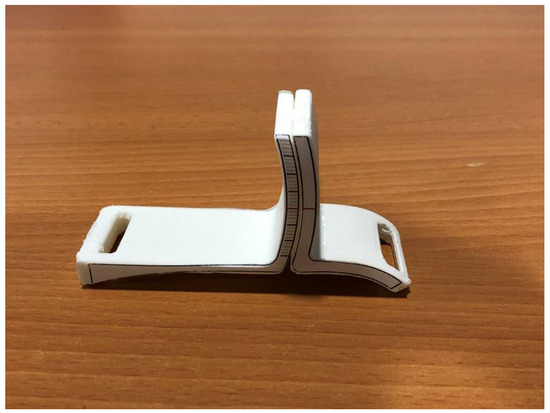You're using an outdated browser. Please upgrade to a modern browser for the best experience.
Please note this is an old version of this entry, which may differ significantly from the current revision.
Subjects:
Engineering, Biomedical
|
Automation & Control Systems
Several methods have been described to quantify the first ray mobility. They have certain disadvantages (great size, sophistication, or lack of validation). The objective of this work was to study the validity and reliability of a new instrument for the measurement of first ray mobility. This new device has characteristics that make it possible to be used in daily clinical practice, such as simplicity, lightness, small size and ease of use. The results obtained suggest that the new instrument is valid and reliable.
- Foot
- First ray
- Mobility
- Measurement
- Range of motion
- Instrument
- Device
The normal motion of the first ray has received the attention of many authors over the years and has been related to different foot pathologies [1,2,3,4]. Different methods have previously been used to quantify this range of motion (ROM). Morton [5,6] described the first manual maneuver to examine the mobility of the first ray. This consisted of applying a dorsal force under the first metatarsal head with one hand, whereas the other hand held the lesser metatarsal heads. Root et al. [7] slightly varied this technique. With the hands positioned as described by Morton, they suggested moving the first metatarsal head toward a maximally dorsiflexed position, and toward a maximally plantarflexed position, and then compare both movements. These authors proposed that, clinically, the normal ROM of the first ray should be 5 mm of dorsiflexion and 5 mm of plantarflexion, with hypermobility identified when dorsiflexion was greater than plantarflexion.
Obviously, simplicity is an important requisite for any clinical test. Unfortunately, manual examination of the first ray ROM lacks sufficient diagnostic accuracy [8], and may be subject to great inter-rater variability. Therefore, instruments to quantify the mobility of the first ray in a valid and reliable way are needed. In the 1990s, Klaue et al. [9] and Glasoe et al. [10] developed valid instruments to measure dorsiflexion of the first ray. Klaue’s instrument consists of a frame attached to an ankle-foot orthosis and from the frame suspended a caliper so that it rested on the first metatarsal to record motion as the examiner dorsiflexes the first ray maximally. Glasoe’s device consists of an ankle-foot orthosis that stabilizes the hindfoot, being the patient sat with their ankle and forefoot immobile in a neutral position, while a separate platform hold the first metatarsal level with the lesser metatarsals to mark the initial neutral position. This device produces a force displacement measurement, and records movement from a probe placed on the head of the first metatarsal. In spite of these instruments having been used in various studies, [11,12,13,14,15,16] they have some inconveniences such as, for example, being too complex, being large, not quantifying plantarflexion (which would be useful to compare with dorsiflexion), or not reflecting the combined movements of dorsiflexion-inversion and plantarflexion-eversion [4,17]. These are possible reasons why they are not used in daily clinical practice [8]. More simple instruments have been subsequently created aiming at solving some of the aforementioned inconveniences [18,19]. However, some studies have reported only limited concordance and data reliability [16,20].
The mobility of the joints between the first metatarsal and the medial cuneiform (first tarsometatarsal joint), and between this and the navicular (medial cuneonavicular joint, is produced around a common axis. Clinically, the result of this mobility during the manual examination of the first ray is that the head of the first metatarsal inverts when dorsiflexes in the sagittal plane and everts when plantarflexes. In a recent study a mathematical formula describing a ‘normal curve’ of the first ray static ROM has been reported [21] (https://www.mdpi.com/2077-0383/7/11/456). This formula was used to design a new instrument to measure the dorsiflexion and plantarflexion of the first ray (patented in Spain with patent number ES201500721, manufactured and distributed by Fresco Podología S.L., Barcelona, Spain). It consists of a small, light, simple plastic instrument, easy to use in daily practice, and which reflects the combined movements of the first ray (Figure 1). The main objective of the present study was to prove the validity and reliability (intra- and inter-rater) of this new instrument. Secondly, the triplanar first ray ROM was compared between feet with normal first rays and feet with hallux abducto-valgus.

Figure 1. The new instrument for the measurement of the first ray mobility.
This entry is adapted from the peer-reviewed paper 10.3390/s20082207
This entry is offline, you can click here to edit this entry!
